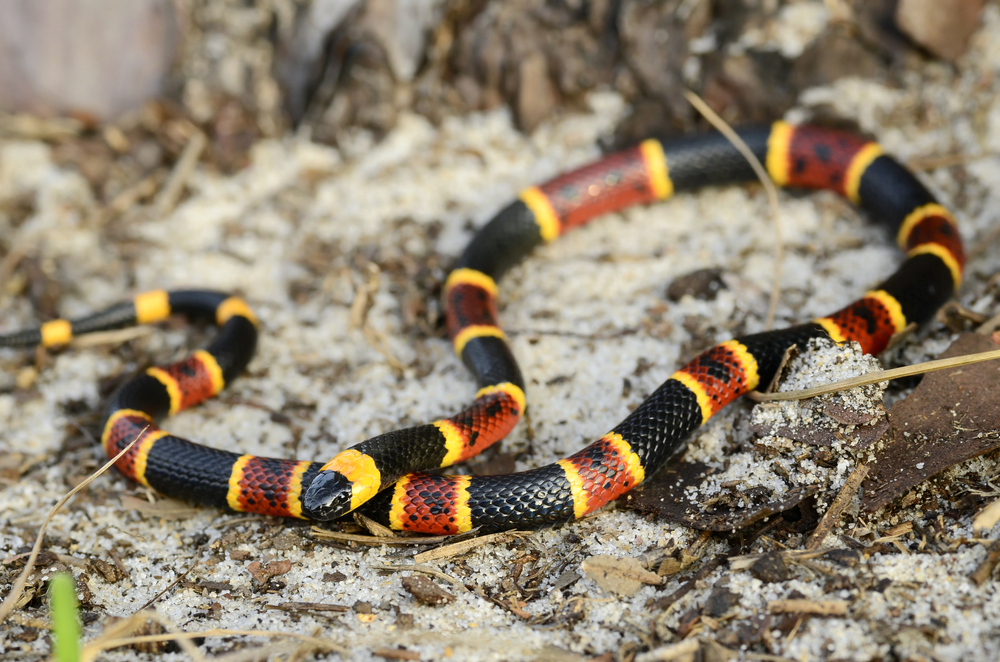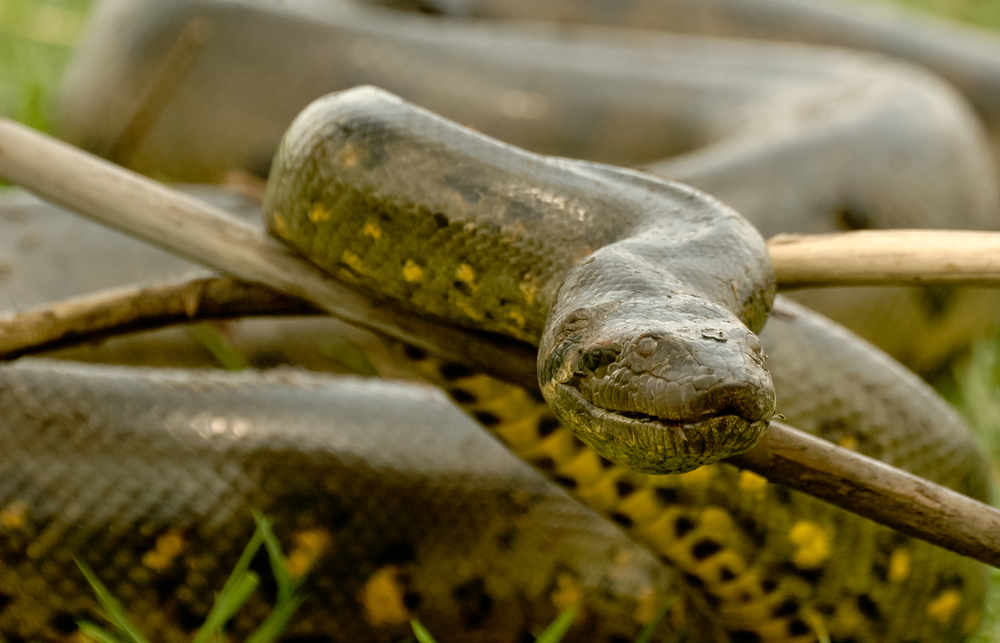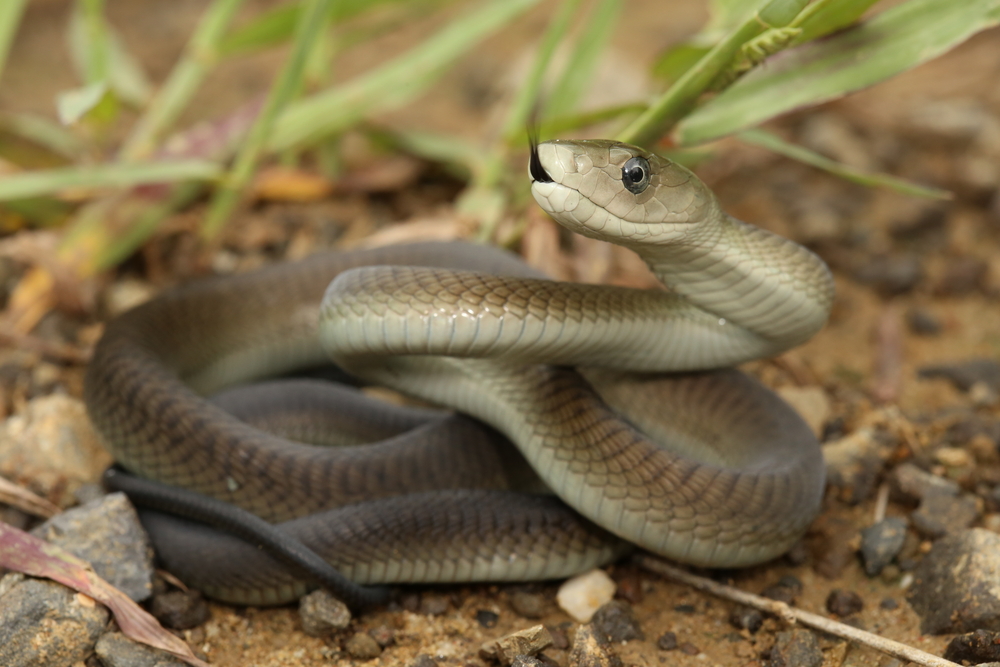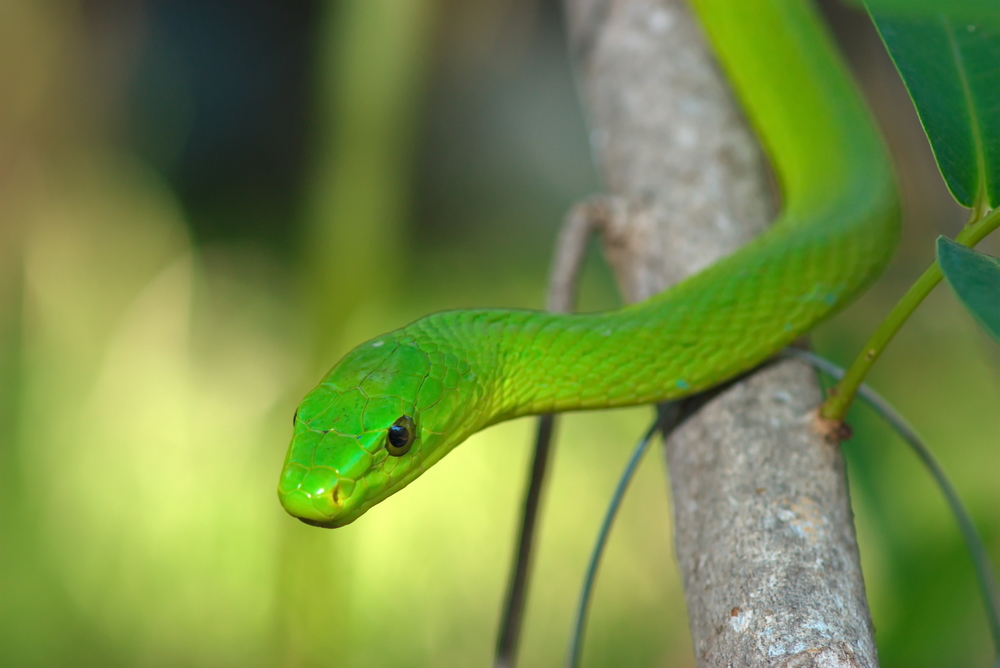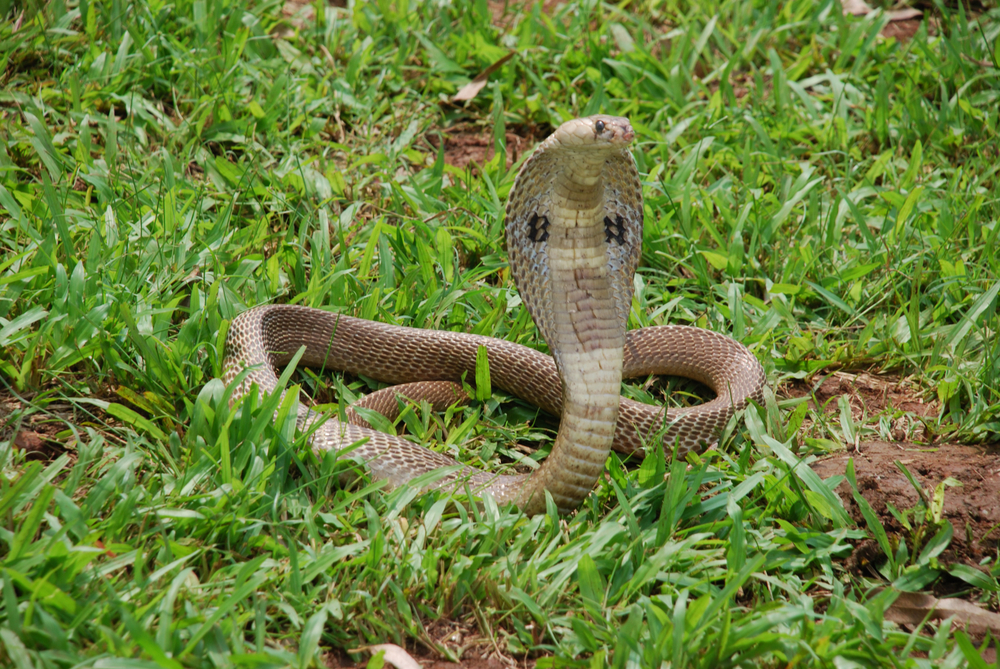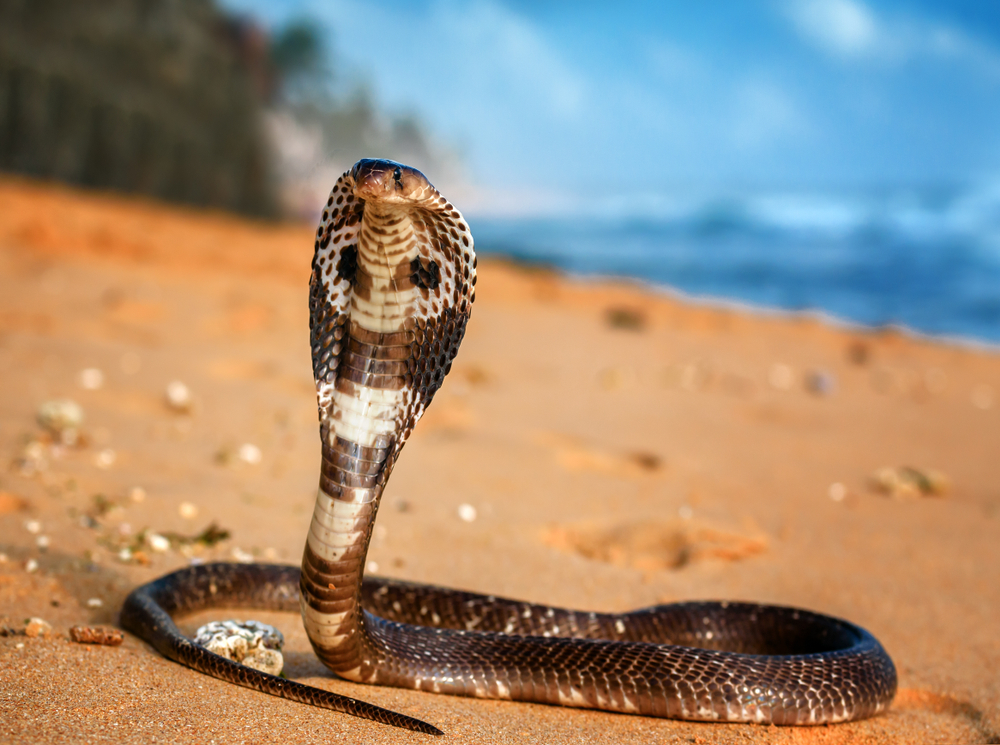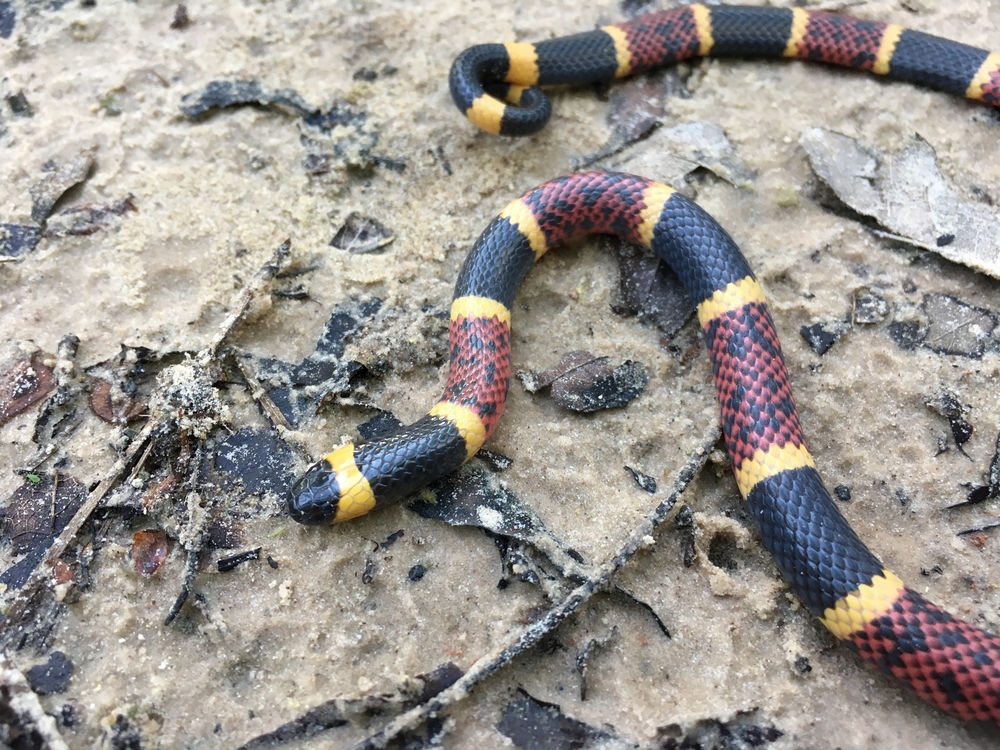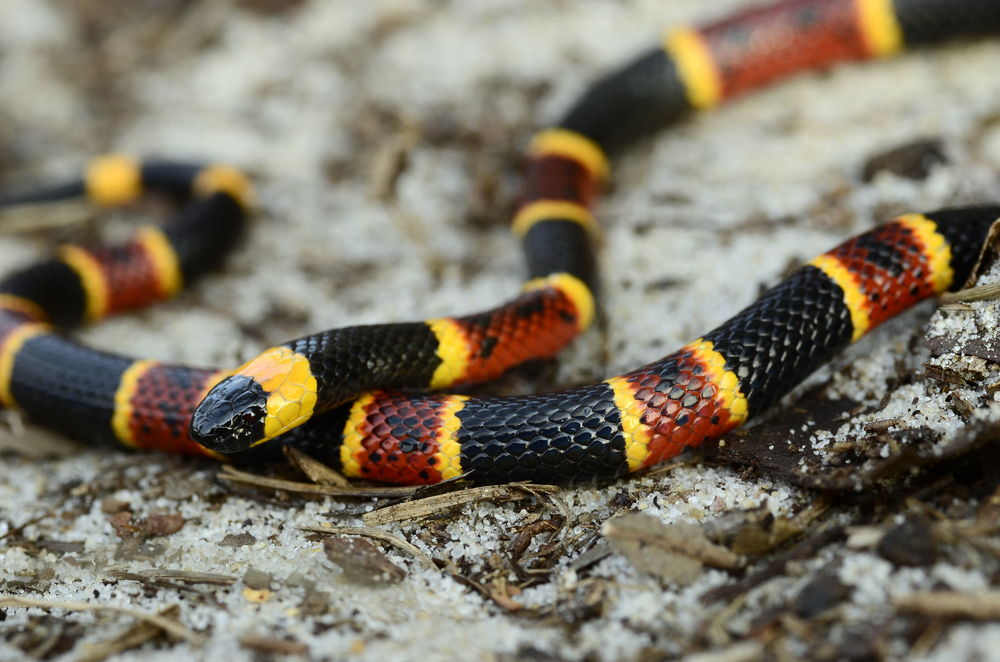The Coral Snake is highly venomous, known for its potent neurotoxic venom, which sets it apart in terms of toxicity among North American snakes. Here’s a breakdown of its venom toxicity and comparison with other venomous snakes:
1. Venom Composition:
- Coral Snake venom contains powerful neurotoxins that can disrupt nerve impulses, leading to paralysis and respiratory failure. It affects the nervous system more than the circulatory system, unlike many other venomous snakes.
2. Venom Potency:
- On a per-milligram basis, Coral Snake venom is one of the most toxic of any North American snake. However, Coral Snakes inject a relatively small amount of venom in a bite compared to other venomous species.
3. Bite Frequency and Danger:
- Coral Snake bites are rare compared to other venomous snakes, partly due to their reclusive nature and the fact that they have smaller fangs and a less effective venom delivery system. Most Coral Snake bites occur due to handling or accidental stepping on the snake.
4. Comparison with Other Venomous Snakes:
- Rattlesnakes and Other Pit Vipers: These snakes, found in the same geographic regions as Coral Snakes, have hemotoxic venom that causes tissue damage and internal bleeding. They are more likely to bite and deliver more venom than Coral Snakes.
- Other Elapids: Internationally, other Elapids like cobras, mambas, and taipans have similarly neurotoxic venom but are often more aggressive and have more efficient venom delivery systems.
5. Medical Treatment:
- Coral Snake bites require immediate medical attention. While antivenom exists, it must be administered promptly to be effective, given the rapid action of the neurotoxins.
In summary, while the Coral Snake’s venom is extremely potent, the overall danger posed by these snakes is mitigated by their small fangs, limited venom quantity, and reclusive behavior. They are less likely to bite than some other venomous snakes, and incidents involving humans are relatively rare. However, any Coral Snakebite is a serious medical emergency due to the potency of the venom.



































































